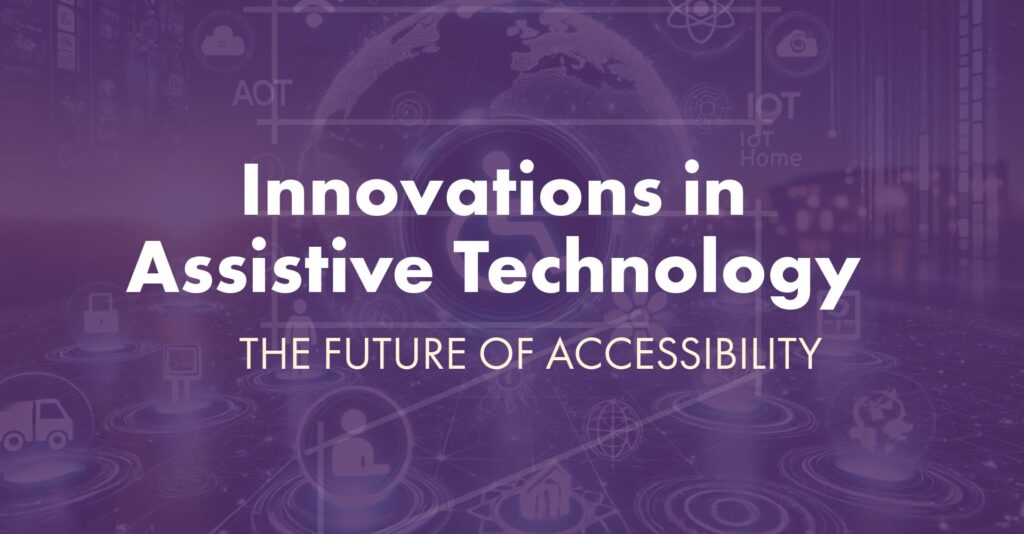Technology has played a transformative role in making the world more accessible for people with disabilities. From assistive devices and smart home innovations to AI-driven accessibility tools, modern technology is reshaping how people interact with their environments and opening doors that were once closed. This blog explores the key ways technology in accessibility is bettering lives and why continued innovation is essential.
Assistive Technology: Empowering Independence
One of the most impactful areas of technological advancement in accessibility is assistive technology. These tools help individuals with disabilities perform tasks that might otherwise be challenging or impossible. Examples include:
- Screen Readers and Magnifiers – Software like JAWS and NVDA allows visually impaired users to navigate digital content through text-to-speech conversion, while screen magnifiers help those with low vision.
- Voice Recognition Software – Programs like Dragon NaturallySpeaking, and Apple’s built-in Voice Control, and Dictation features on their computers and smartphones enable people with mobility impairments to control devices and compose text using voice commands.
- Adaptive Keyboards and Mice – Ergonomic and customizable input devices help individuals with limited dexterity use computers more effectively. Wearable devices like MouthPad, a hands-free mouse, further enhance accessibility by allowing users to control their devices using tongue and head movements.
- Prosthetics and Wearable Technology – Advances in robotics and AI have led to highly functional prosthetics and exoskeletons that restore mobility and independence.
Smart Homes and IoT: Enhancing Daily Living
The Internet of Things (IoT) has revolutionized home assistive technology by providing greater control over everyday tasks. Smart home devices allow individuals to manage their environments with ease, often through voice commands or automated systems:
- Smart Lighting and Thermostats – Systems like Philips Hue and Nest provide remote and voice-activated control, making it easier for individuals with mobility limitations to adjust their environment.
- Automated Door Openers – Products like Push App (by We Hear You) and smart locks enhance independence by enabling hands-free operation of doors.
- Voice-Controlled Assistants – Devices like Amazon Alexa, Google Assistant, and Apple’s Siri help individuals manage schedules, control appliances, and access information without the need for manual input.
- Security and Monitoring Systems – Smart cameras and alert systems provide peace of mind, allowing users to monitor their homes remotely and receive emergency assistance when needed.
AI and Machine Learning: Breaking Barriers
Artificial intelligence (AI) and machine learning are pushing the boundaries of accessibility by creating innovative solutions that adapt to individual needs. Some groundbreaking advancements in assistive technology include:
- Real-Time Captioning and Transcription – AI-powered tools like Google’s Live Transcribe and Microsoft’s AI captioning services provide instant, accurate captions for conversations, making communication more accessible for people who are deaf or hard of hearing.
- AI-Powered Image Recognition – Apps like Seeing AI and Google Lens help individuals with visual impairments understand their surroundings by describing objects, text, and people through AI-driven analysis.
- Predictive Text and Adaptive Learning – AI-driven typing assistance, such as Grammarly and accessibility-focused keyboards, help individuals with dyslexia or other learning disabilities communicate more effectively.
- Navigation Assistance – AI-enhanced GPS apps like Aira and Be My Eyes assist blind and low-vision users by providing real-time guidance from volunteers or AI-driven descriptions of their environment.
Digital Accessibility: Making Online Spaces Inclusive
The push for digital accessibility has led to significant improvements in web design and application development. Companies and organizations are prioritizing inclusive digital experiences by implementing assistive technology digitally:
- WCAG-Compliant Websites – The Web Content Accessibility Guidelines (WCAG) set standards for accessible web design, ensuring websites are usable for individuals with disabilities.
- Keyboard Navigation and Alternative Input Methods – Websites and apps are increasingly designed to support navigation without a mouse, benefiting users with motor impairments.
- Customizable Interfaces – Adjustable font sizes, high-contrast modes, and text-to-speech functionalities enhance usability for individuals with different accessibility needs.
- Accessible Social Media Features – Platforms like Twitter and Instagram have introduced alt text options for images, making visual content accessible to screen readers.
The Future of Accessibility Technology
While technology has already made tremendous strides in accessibility, there is still much work to be done. Future innovations in assistive technology may include:
- Brain-Computer Interfaces (BCIs) – Research into BCIs is opening up possibilities for individuals with severe mobility impairments to control devices using brain signals.
- Augmented Reality (AR) and Virtual Reality (VR) – These technologies can offer immersive, accessible learning and entertainment experiences.
- Advanced AI Companions – Personal AI assistants with deep learning capabilities could provide highly personalized support for individuals with disabilities.
- More Inclusive Transportation Solutions – Autonomous vehicles and AI-driven public transit enhancements could make transportation more accessible for everyone.
Conclusion: Prioritizing Inclusive Innovation
Assistive technology has the power to bridge gaps and create a more inclusive world, but only if accessibility remains a priority in design and development. Businesses, developers, and policymakers must continue to champion innovation that benefits people with disabilities. By doing so, we can ensure that technology serves as a tool for empowerment rather than exclusion.
At Equal Accessibility®, we work with businesses to integrate accessibility into their products, spaces, and digital platforms. If you’re looking to make your company more inclusive, contact us today to learn how we can help.

